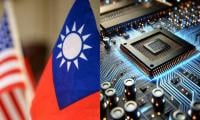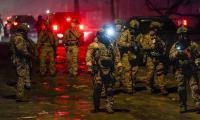Provincialising AJK
With the (s)election of Masood Khan as the president of Azad Jammu & Kashmir (AJK) on August 16, preceded by the elections for the legislative assembly last month, the façade of yet another ‘democratically’ elected government is complete.
The contempt for democracy in AJK was starkly expressed in the way Masood Khan, a former diplomat from the Rawalakot district, was nominated in violation of every electoral and legal norm of the state. According to AJK press, Masood Khan’s name was not in the electoral rolls. He did not hold ‘state subject’ (a certificate that one is a resident of the State of Jammu and Kashmir; his name was inducted in the electoral rolls with might and main. When the AJK High Court was moved to challenge his qualification, an interim verdict was quickly given in Khan’s favour.
Sardar Ibrahim must have turned in his grave. As AJK president, Sardar Ibrahim moved the court against his dismissal as president by the Zia regime in 1978. It took the honourable court 13 long years to invalidate Ibrahim’s dismissal. One should perhaps not blame the court. The blame lies with mangoes that did not explode.
In case any one finds Masood Khan’s (s)election repugnant to his/her democratic sensibilities, s/he should recall General Anwar’s ‘election’ in 2001. The general was vice chief of army staff three days before his ‘election’. According to Section 5 (2) (ix) of the AJK Legislative Assembly (Elections) Ordinance, 1970, the general should have retired two years before becoming president.
What about the legislative assembly elections last month? Short answer: business as usual. Since 1975, the ruling party in Islamabad installs its AJK proxy in Muzaffarabad. However, the focus of this article is to point out: firstly, a near-exclusion of riasati (state) political parties from the AJK Legislative Assembly 1990s onwards; second, establishing the fact that government in Muzaffarbad is formed by a local affiliate of the ruling party in Islamabad.
Apart from the Muslim Conference, riasati parties have been disappearing from the AJK Legislative Assembly since the 1990s. AJK chapters of the PML-N and PTI have further crowded out the riasati parties while ‘third optionists’ have been systematically kept away from electoral politics. In 2006, the Election Commission rejected nomination of over 50 ‘third optionists’. This is a mockery of democracy compounded by an interim constitution that effectively reduces the AJK government to a district administration.
The amputation of AJK’s administrative and political powers is further consolidated by extending the organisational structures of Pakistani political parties into AJK. By launching branches of Pakistan’s political parties in AJK, the state is provincialised. To his discredit, Zulfikar Ali Bhutto initiated this Machiavellian process by ensconcing a PPP-AJK government in Muzaffarabad post-1975 elections. True, the Awami League was the first mainstream Pakistani political party to plant a local affiliate in AJK in the 1950s. But it was Bhutto who introduced electoral manipulation in AJK by, on the one hand, infiltrating AJK organisationally, while on the other, rigging elections in constituencies meant for riasati refugees in Pakistan.
Bhutto’s henchman, Hayat Muhammad Khan Tamman, ensured that nine of the 12 refugee seats were delivered to the PPP-AJK. Tamman’s overzealous performance even embarrassed Bhutto. Reportedly, ahead of 1977 general elections in Pakistan, he told a closed gathering that the forthcoming elections would not be like AJK’s ‘Tammani elections’. While the Muslim Conference boycotted the 1975 elections, riasati parties still had a share in the Legislative Assembly. The Liberation League won five, Azad Muslim Conference bagged three and three seats were captured by rebellious Muslim Conference members. In a house of 42, the PPP-AJK had 26 members.
In 1970, when elections were held for the first time in AJK (by that time, Indian Occupied Kashmir had gone to the polls four times), the Muslim Conference, Liberation League, Azad Muslim Conference tossed their hats in the electoral arena and bagged 15, 5 and 1 mandates respectively. In 1970, the president of the state was also directly elected. In fact, AJK had a presidential system until 1975 when it was replaced by a parliamentary one.
While elections were due in 1980, courtesy Zia’s regime they took place in 1985. While boycotted by the PPP-AJK – in a macabre reverse of 1975 – the Muslim Conference won 19 of the 40 seats, Tehreek-e-Amal (launched by Brigadier Hayat, AJK president under Gen Zia’s regime) got 8, Liberation League 4, and the Azad Muslim Conference managed 2 seats.
In 1990, there was a peculiar situation in Pakistan: the PPP was ruling Islamabad and two provinces while the IJI was in charge of Punjab. AJK elections mirrored the political matrix in Pakistan. The PPP-AJK and Muslim Conference (historically an ally of the Muslim League) each won 16 seats. However, the PPP managed to form government in Muzaffarabad. This government did not last since Benazir Bhutto was removed soon after the AJK elections.
Fresh elections were held in 1991. Since the Muslim League-led IJI was in command of Islamabad, the Muslim Conference bagged 31 of 40 seats while the PPP-AJK (3 seats) was routed.
When the next AJK elections were held in 1996, the PPP was back in Islamabad. Once again, the PPP-AJK formed the government. After the election of the reserved seats, in a 49-member house, PPP-AJK had 37 seats while the Muslim Conference was reduced to 9. The Junejo League (at the time, a PPP ally) and Jamaat-e-Islami had one member each.
In 2001, as the military was at the helm in Islamabad, the establishment’s favourite Muslim Conference dominated the election winning 21 seats against the PPP-AJK’s 15 while PML (1 mandate) and two independents returned to the Legislative Assembly.
In 2006, the Muslim Conference won 22 seats, PPP-AJK 6, People’s Muslim League (a proxy of Quaid League led by Barrister Sultan Mehmoud who now heads PTI-AJK) and ridiculously the MQM (2 mandates), also infiltrated the Legislative Assembly by way of ubiquitous refugee seats (both seats from Karachi). The MMA also contested the elections, but failed to secure even one seat. To their credit, AJK voters have never voted beards into power.
In 2011, while the PPP was running the show in Islamabad, a split in the Muslim Conference led to the birth of PML(N)-AJK; a 1990-like situation was existing in Pakistan – the PPP in Islamabad, PML-N in Punjab. Hence, 21 seats for PPP-AJK, PML-N 8, Muslim Conference 5 and independents 2. The PPP-AJK formed government.
Recall how PML-N (31 seats) dominated the AJK Legislative Assembly elections held last month while the PPP-AJK was routed (3 seats). The PTI clinched only two seats while the Muslim Conference was reduced to three. Even if one considers JK-PPP (a split from PPP-AJK) a riasati party, indigenous parties have been effectively marginalised.
(Most facts cited from Christopher Snedden’s ‘Kashmir: The Unwritten History’).
The writer is a freelance contributor.
Email: mfsulehria@hotmail.com
-
 Prince Harry All Set To Return To Britain Next Week?
Prince Harry All Set To Return To Britain Next Week? -
 Is Princess Charlotte Becoming Most Confident Young Royal?
Is Princess Charlotte Becoming Most Confident Young Royal? -
 ‘Stranger Things’ Star David Harbour Speaks Up About ‘psychotherapy’
‘Stranger Things’ Star David Harbour Speaks Up About ‘psychotherapy’ -
 Jennifer Love Hewitt Talks About Scary 9-1-1 Episode
Jennifer Love Hewitt Talks About Scary 9-1-1 Episode -
 Kate Middleton Ditches Palace Life For Where She 'truly Relaxes'
Kate Middleton Ditches Palace Life For Where She 'truly Relaxes' -
 Pixel Watch May Soon Warn You If You Leave It Behind
Pixel Watch May Soon Warn You If You Leave It Behind -
 Serious Liver Scarring Shows Potential To Be Reversed With Latest Drug
Serious Liver Scarring Shows Potential To Be Reversed With Latest Drug -
 Elon Musk Backs Donald Trump To Invoke Insurrection Act Amid Minnesota Protests
Elon Musk Backs Donald Trump To Invoke Insurrection Act Amid Minnesota Protests -
 Scientists Unravel Mystery Of James Webb’s ‘little Red Dots’ In Deep Space
Scientists Unravel Mystery Of James Webb’s ‘little Red Dots’ In Deep Space -
 Nano Banana Explained: How Google’s AI Got Its Name
Nano Banana Explained: How Google’s AI Got Its Name -
 Fire Causes Power Outage On Tokyo Train Lines, Thousands Stranded As ‘operations Halted’
Fire Causes Power Outage On Tokyo Train Lines, Thousands Stranded As ‘operations Halted’ -
 YouTube, BBC To Ink Landmark Deal To Launch Exclusive Bespoke Shows
YouTube, BBC To Ink Landmark Deal To Launch Exclusive Bespoke Shows -
 Meghan Markle Turning Prince Harry's Invictus Games Event Into 'bad Fashion Show'
Meghan Markle Turning Prince Harry's Invictus Games Event Into 'bad Fashion Show' -
 TikTok To Roll Out New Age Detection Technology Across Europe
TikTok To Roll Out New Age Detection Technology Across Europe -
 Tom Brady Explains How Divorce With Gisele Bündchen Affected His NFL Career
Tom Brady Explains How Divorce With Gisele Bündchen Affected His NFL Career -
 Taiwan, TSMC To Expand US Investment: A Strategic Move In Global AI Chip Race
Taiwan, TSMC To Expand US Investment: A Strategic Move In Global AI Chip Race



